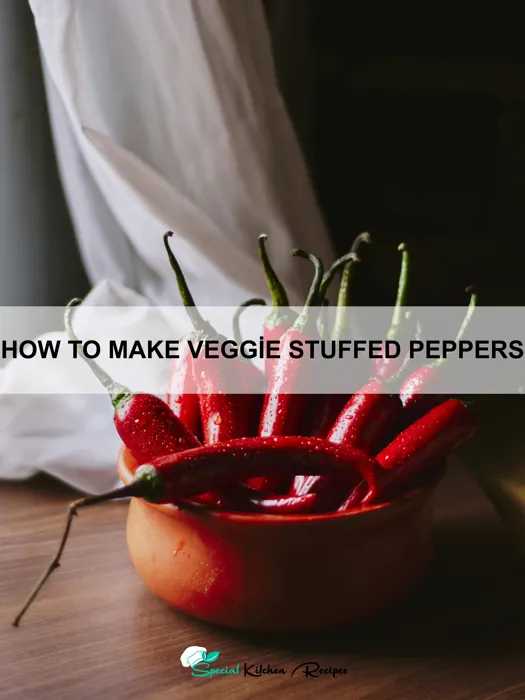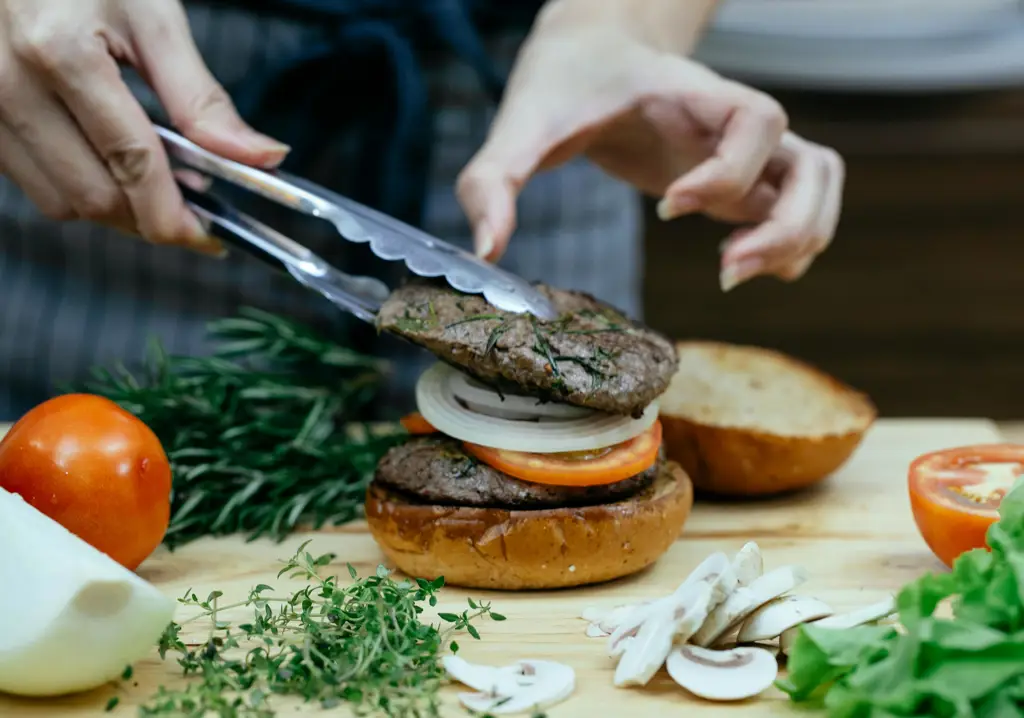Veggie stuffed peppers, a vibrant and hearty dish, boast a surprisingly rich history, though pinpointing an exact origin is difficult. The concept of stuffing vegetables, however, stretches back centuries. Ancient civilizations, from the Greeks and Romans who stuffed vine leaves and gourds, to various cultures across Asia using similar techniques, all contributed to the evolution of this culinary tradition. The specific iteration of bell peppers stuffed with a savory vegetable mixture is likely a more recent development, gaining popularity in the 20th century alongside the rise of readily available bell peppers and the increasing focus on vegetarian and healthier eating options.
While a precise origin remains elusive, the dish’s popularity is undeniable. In the United States alone, an estimated 75% of households prepare some form of stuffed vegetable dish annually, with stuffed peppers ranking high among the favorites. This reflects a broader global trend towards incorporating more vegetables into diets. The convenience and adaptability of stuffed peppers contribute significantly to their appeal; they can be customized to suit individual tastes and dietary needs, incorporating various vegetables, grains, and spices. This versatility has led to regional variations, from the spicier versions found in Mexican cuisine to the more herbaceous preparations common in Mediterranean cooking.
Beyond its culinary appeal, veggie stuffed peppers hold cultural significance as a symbol of resourceful cooking. Historically, stuffing vegetables was a practical method of using up leftover ingredients and stretching limited resources. This resonates even today, as the dish offers a delicious and economical way to utilize a variety of vegetables, reducing food waste. Furthermore, stuffed peppers often feature prominently in family meals and gatherings, representing comfort, nourishment, and a shared culinary heritage. Their adaptability also makes them a popular choice for potlucks and gatherings, illustrating the dish’s role as a social connector, fostering community through shared culinary experiences.
Ingredients and Measurements
This recipe yields approximately 4 stuffed peppers. Adjust quantities as needed for more servings. Precise measurements are crucial for achieving the perfect texture and flavor balance. Using a kitchen scale for ingredients like rice and quinoa can significantly improve consistency.
Vegetables:
- 4 large bell peppers (any color, but red and orange offer a sweeter flavor), halved lengthwise and seeded. Ensure the peppers are firm and without blemishes for optimal stuffing and cooking.
- 1 medium onion, finely chopped (approximately 1 cup). Using a sharp knife and chopping finely ensures even cooking and prevents large onion chunks from overpowering the dish.
- 2 cloves garlic, minced (or 1 teaspoon garlic powder). Fresh garlic provides the best flavor, but garlic powder works in a pinch.
- 1 (14.5 ounce) can diced tomatoes, undrained. Using undrained canned tomatoes adds moisture and acidity to the filling.
- 1 cup chopped zucchini, approximately 1 medium zucchini. Choose zucchini that is firm and not too watery.
- 1 cup chopped carrots, approximately 2 medium carrots. Shredded or finely diced carrots cook more evenly.
- 1/2 cup chopped mushrooms (optional, but adds great umami). Choose firm mushrooms and sauté them lightly before adding to the filling.
Grains & Other Ingredients:
- 1 cup uncooked long-grain rice or quinoa, rinsed. Rinsing the rice or quinoa removes excess starch and helps prevent a sticky filling.
- 1 (15 ounce) can kidney beans, rinsed and drained. Black beans or pinto beans are also excellent substitutes.
- 1 teaspoon dried oregano. Italian seasoning or a mix of herbs like basil and thyme can be substituted.
- 1/2 teaspoon salt. Adjust to your taste preference.
- 1/4 teaspoon black pepper. Freshly ground black pepper is recommended for the best flavor.
- 1/2 cup vegetable broth or water. This helps to cook the rice or quinoa and adds moisture to the filling.
- 2 tablespoons olive oil or your preferred cooking oil. Olive oil adds a nice flavor, but other oils work well too.
- 1 cup shredded mozzarella cheese (optional, for topping). Any melting cheese works well as a topping.
Important Note: Always taste and adjust seasonings as needed throughout the cooking process. This recipe is a guideline; feel free to experiment with your favorite vegetables and spices!
Equipment and Utensils
Making delicious veggie-stuffed peppers requires the right tools to ensure efficient and even cooking. While you might already have most of these items in your kitchen, having them readily available will streamline the process.
For prepping the peppers, you’ll need a sharp paring knife (a 3-4 inch blade is ideal) for precise cutting around the stems and removing the seeds and membranes. A sturdy cutting board, preferably made of wood or plastic, will protect your counter and provide a stable surface for chopping. A large bowl (at least 4-quart capacity) will be invaluable for mixing the stuffing ingredients.
To ensure even cooking and prevent sticking, you’ll need a 9×13 inch baking dish. A smaller or larger dish can work, but the 9×13 inch is perfect for accommodating approximately 6 medium-sized bell peppers. If you prefer to cook them individually, you can use oven-safe ramekins or individual baking dishes. Remember to select a baking dish that’s oven-safe up to at least 400°F (200°C).
Measuring tools are crucial for accurate ingredient proportions. Invest in a good set of measuring cups (1 cup, ½ cup, ¼ cup, and ⅛ cup) and measuring spoons (1 tablespoon, 1 teaspoon, ½ teaspoon, ¼ teaspoon). Inconsistent measurements can significantly affect the final flavor and texture of the stuffing. A large spoon or spatula will be useful for mixing the stuffing and transferring it into the peppers.
Optional but recommended equipment includes a food processor to quickly chop vegetables like onions and garlic. A vegetable peeler can be used to remove the skin from the peppers if desired, although it’s not essential. Finally, a pair of oven mitts or pot holders are essential for safely handling the hot baking dish once the peppers are cooked.
Cleaning up will be easier if you use separate bowls for chopping different vegetables and line your baking dish with foil for easy cleanup. Remember to always wash your knives and utensils thoroughly after use.
Having all your equipment and utensils ready before you begin will contribute to a smoother, more enjoyable cooking experience and will help to avoid interruptions during the cooking process.
Vegetable Preparation
Proper vegetable preparation is key to achieving perfectly stuffed peppers. Begin by selecting firm, brightly colored bell peppers. Choose a variety of colors for visual appeal – red, yellow, and orange peppers offer different sweetness levels and nutritional benefits. For this recipe, we’ll use four medium-sized bell peppers (approximately 1 pound total).
Wash the peppers thoroughly under cold running water. Remove the tops and carefully scoop out the seeds and membranes using a spoon or small knife. Ensure you remove all the white pith, as this can be bitter. Try to keep the pepper bases intact as much as possible to create stable “bowls” for stuffing.
Once the peppers are cleaned, set them aside. Now, let’s prepare the other vegetables. We’ll need one medium onion (about ½ cup chopped), two cloves of garlic (minced), and one cup of chopped mushrooms. The type of mushroom is your preference; cremini or button mushrooms work well. Finely dice the onion to ensure even cooking. Mince the garlic finely to maximize its aromatic impact. Roughly chop the mushrooms – you want some texture in your stuffing.
For added flavor and nutrition, we’ll incorporate one cup of chopped zucchini and one cup of chopped carrots. Use a vegetable peeler to remove the outer skin of the carrots, and then dice them into small, roughly ½-inch pieces. Similarly, dice the zucchini into small pieces to ensure even cooking. Avoid over-chopping the carrots and zucchini; slightly larger pieces will retain more texture and prevent them from becoming mushy during baking.
Finally, consider adding a half cup of chopped bell pepper from the pepper tops you removed earlier. This adds extra pepper flavor and prevents food waste. Don’t be afraid to experiment with other vegetables like chopped tomatoes, bell pepper, or even corn. Remember to adjust cooking times depending on the added vegetables. Always taste and adjust seasoning as you go to achieve your desired flavor profile.
Once all the vegetables are prepped, you’re ready to move on to the next step: sautéing the vegetables to create the flavorful stuffing mixture. Having all your vegetables prepped and measured beforehand will make the cooking process much smoother and more efficient.
Rice and Stuffing Preparation
The success of your veggie stuffed peppers hinges significantly on the perfectly prepared rice and stuffing. We’ll be making a flavorful and hearty stuffing that complements the sweetness of the peppers. For this recipe, we’ll use 1 ½ cups of long-grain white rice. Long-grain rice holds its shape well after cooking, preventing a soggy stuffing.
Begin by rinsing the rice under cold water until the water runs clear. This removes excess starch and helps prevent the rice from becoming sticky. Then, combine the rinsed rice with 3 cups of vegetable broth in a medium saucepan. Using vegetable broth instead of water adds depth of flavor to the stuffing. Bring the mixture to a boil, then reduce heat to low, cover, and simmer for 15-18 minutes, or until all the liquid is absorbed and the rice is tender but not mushy.
While the rice cooks, prepare the remaining stuffing ingredients. Finely chop one medium onion (about ½ cup) and two cloves of garlic (about 1 tablespoon minced). Sauté the onion and garlic in 2 tablespoons of olive oil over medium heat until softened, about 5 minutes. Don’t brown the onions; we’re aiming for a gentle softening to release their flavor.
Next, add 1 cup of chopped mushrooms, ½ cup of chopped bell peppers (any color), and ½ cup of frozen peas. Cook for another 5 minutes, or until the vegetables are tender-crisp. Season generously with salt and pepper to taste. You can also add other vegetables like zucchini, carrots, or corn at this stage, adjusting the quantities to your preference.
Once the rice is cooked, fluff it gently with a fork to separate the grains. Add the cooked rice to the sautéed vegetables along with ½ cup of grated Parmesan cheese (or your favorite cheese), 1 tablespoon of chopped fresh parsley, and 1 teaspoon of dried oregano. Stir everything together carefully to combine all the ingredients evenly. Taste and adjust seasoning as needed. Let the stuffing cool slightly before filling the peppers.
Important Note: If you prefer a more flavorful stuffing, consider adding a tablespoon of tomato paste or a splash of red wine to the sautéed vegetables. You can also experiment with different herbs and spices to create your own unique stuffing blend.
Pepper Preparation
Selecting the right peppers is crucial for successful stuffed peppers. Choose firm, brightly colored bell peppers, preferably large ones (about 6-8 inches long) for easier stuffing. Avoid peppers with bruises, soft spots, or blemishes. Aim for a mix of colors for visual appeal – red, yellow, and orange work beautifully. You’ll need approximately 4-6 large bell peppers, depending on the size of your serving.
Once you’ve selected your peppers, wash them thoroughly under cold running water. Pay special attention to the crevices and stem area, as these can harbor dirt and debris. After washing, carefully remove the stems and cores. A sharp paring knife is ideal for this task. You can either cut off the stem end completely or carefully cut around it to leave a small portion intact for a more aesthetically pleasing presentation. The choice is yours.
Next, you’ll need to remove the seeds and membranes from the inside of the peppers. This is important for two reasons: it prevents the peppers from becoming overly bitter, and it creates more space for the stuffing. Use a small spoon or your fingers to scrape out the seeds and membranes thoroughly. Ensure you remove all the white pithy membranes; they have a distinctly bitter taste.
Now, it’s time to prepare the peppers for stuffing. You can either leave the peppers whole or halve them lengthwise. Halving the peppers is generally recommended for easier stuffing and more even cooking. If halving, use a sharp knife to cut the pepper in half lengthwise, going carefully through the core area. If leaving them whole, ensure the inside is completely cleaned of seeds and membranes.
To prevent the peppers from collapsing during cooking, you can optionally blanch them briefly. Bring a large pot of salted water to a boil. Gently place the peppers in the boiling water for 1-2 minutes. This will slightly soften them and help them hold their shape. Immediately remove the peppers and submerge them in a bowl of ice water to stop the cooking process. This blanching step is optional but highly recommended for larger or thicker-walled peppers.
Finally, pat the peppers dry with paper towels before stuffing. This will prevent excess moisture from making the stuffing soggy. Your prepared peppers are now ready to be filled with your delicious veggie stuffing mixture!
Assembly
With your flavorful veggie filling prepared, it’s time to assemble your stuffed peppers. This step requires careful handling to ensure even cooking and prevent spills. Begin by preheating your oven to 375°F (190°C). Lightly grease a large, oven-safe baking dish; a 9×13 inch dish works well for approximately 6-8 peppers. You can use cooking spray or a thin layer of olive oil.
Choosing the Right Peppers: Select firm, brightly colored bell peppers of roughly the same size. Aim for peppers that are about the same size to ensure even cooking times. Approximately 6-8 medium-sized bell peppers should suffice for this recipe. Avoid peppers with blemishes or soft spots.
Preparing the Peppers: Carefully cut the peppers in half lengthwise and remove the seeds and membranes. Use a small spoon or knife to thoroughly clean out the inside. Important: Don’t discard the pepper tops; you can chop them finely and add them to the filling for extra flavor and nutrients. If your peppers are particularly large, you might want to consider trimming the tops slightly to prevent them from toppling over during baking.
Filling the Peppers: Using a spoon or a small cup, carefully fill each pepper half with the prepared vegetable mixture. Pack the filling firmly, but don’t overstuff them, as this can cause them to burst during baking. Aim for filling each pepper about ¾ full. For even cooking, ensure the filling is evenly distributed across each half.
Adding Liquid: To prevent the peppers from drying out during baking, you’ll need to add a small amount of liquid to the bottom of the baking dish. Pour about ½ cup to 1 cup of water or vegetable broth into the bottom of the dish, ensuring no liquid directly touches the peppers. This will create a moist environment conducive to tender and flavorful peppers.
Baking: Place the stuffed peppers in the preheated oven and bake for approximately 45-60 minutes, or until the peppers are tender and the filling is heated through. Check the peppers around the 45-minute mark; if they are browning too quickly, you can lightly cover the baking dish with foil. Cooking time will vary depending on the size and type of peppers used. Use a fork to test for doneness; the peppers should be easily pierced.
Resting: Once cooked, remove the peppers from the oven and let them sit for 10-15 minutes before serving. This allows the filling to set and makes them easier to handle.
Recommendations
For optimal flavor, allow the stuffed peppers to sit for at least 15 minutes after cooking. This allows the flavors to meld and the filling to cool slightly before serving. Serving them warm is ideal, but they can also be enjoyed at room temperature.
Serving Suggestions: These veggie-stuffed peppers are a complete meal on their own, but you can enhance them with a side of crusty bread to soak up the delicious juices. A simple green salad with a light vinaigrette provides a refreshing contrast to the hearty peppers. For a richer experience, consider serving them with a dollop of plain Greek yogurt or a sprinkle of fresh herbs like parsley or chives.
Storage: Leftover stuffed peppers can be stored in an airtight container in the refrigerator for up to 3 days. Reheat gently in the microwave or oven until warmed through. Avoid overcooking, as this can dry out the filling.
Complementary Dishes: These stuffed peppers pair beautifully with a variety of dishes. A creamy tomato soup makes a wonderful starter, while a light quinoa or couscous salad adds a healthy and flavorful side. For a heartier accompaniment, consider roasted vegetables like broccoli or asparagus. A simple side of rice also complements the flavors well.
Nutritional Information (Approximate per serving, based on a 4-pepper recipe): Calorie count will vary significantly depending on the specific vegetables and ingredients used. However, a typical serving of veggie-stuffed peppers could contain approximately 250-350 calories. They are a good source of fiber, vitamins A and C, and various other essential nutrients. The exact nutritional profile will depend on the ingredients used.
Important Note: Nutritional information provided is an estimate and may vary depending on the specific ingredients and portion sizes used. For precise nutritional information, it is recommended to use a nutrition calculator with your specific recipe details.





